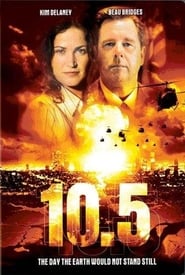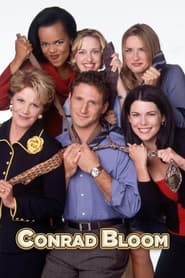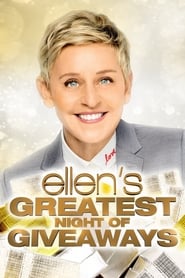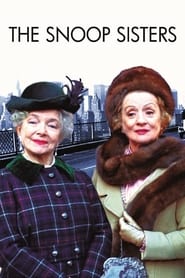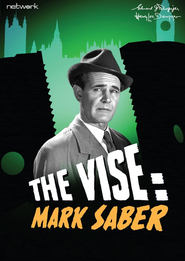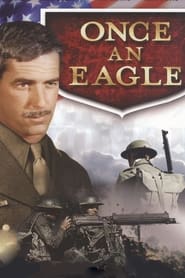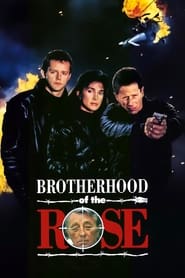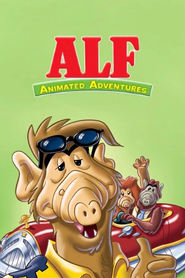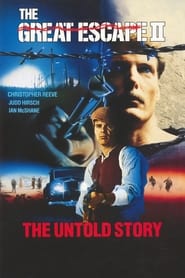Nbc TV Series - Page 49
-
10.5
2004
star 6.6Dr. Samantha Hill is an earthquake research scientist at a noted university in Washington State. Her alternative theories and her take-charge attitude cause friction with her peers. When the controversial Dr. Hill is ultimately put in charge, she is effectively entrusted with saving the entire population of the West Coast from a series of earthquakes that threaten to permanently fracture the West Coast from the rest of North America. -
iHeartRadio Music Awards
2014
star 1This revolutionary awards show features the most popular songs and artists in the nation based on the iHeartRadio Chart, a ranking decided by what consumers listen to both on the radio and online. -
Conrad Bloom
1998
Conrad Bloom
1998
Copywriter Conrad Bloom is a "nice guy" in New York City whose life is filled with interesting women: his mother, his sister, an ex-girlfriend, his female boss, and a female co-worker. This situation-comedy explores his relationships with those women as well as his life as a young male reaching the crossroads of adulthood in the 1990s. -
Ellen's Greatest Night of Giveaways
2019
Ellen DeGeneres, along with her celebrity friends, delivers incredible gifts to unsuspecting people who’ve topped her nice list. -
Lanigan's Rabbi
1977
star 5Lanigan's Rabbi is an American crime drama series that aired on NBC during the first half of 1977. -
Mark Saber
1954
star 7Mark Saber refers to a half-hour 1950s detective television series that took different forms and titles during its run. Tom Conway portrayed Mark Saber as a plainclothes English detective working with the Homicide Division of the N.Y.P.D. in Mystery Theater which aired on ABC from October 1951 to June 1954. Donald Gray portrayed Mark Saber as a one-armed private detective based in London. In The Vise which aired on ABC from September 1955 to June 1957. Donald Gray also portrayed Mark Saber in Saber of London which aired on NBC from October 1957 to May 1960. -
Diana
1973
star 5Diana is an American sitcom that aired on NBC during the 1973-1974 television season that was created by Leonard Stern, which ran from September 10, 1973 to January 7, 1974. The series was filmed in front of a live studio audience at CBS Studio Center in Los Angeles. -
Once an Eagle
1976
star 6.8Once An Eagle is a 1976 nine-hour American television mini-series directed by Richard Michaels and E.W. Swackhamer. The picture was written by Peter S. Fischer and based on the 1968 Anton Myrer novel of the same name. The first and last installments of the seven-part series were each two-hour broadcasts, while the interim episodes were 60 minutes. The mini-series concerns the thirty year careers of two military men, from the outbreak of World War I to the aftermath of World War II. -
Brotherhood of the Rose
1989
star 6.7Romulus and Remus were picked up at an orphanage at a young age, raised together as brothers and trained to supersede every other CIA agents. -
The Jerry Lewis Show
1967
star 5The Jerry Lewis Show is the second version of the series that aired on NBC from September 12, 1967 to May 27, 1969. -
Down You Go
1951
Down You Go
1951
Down You Go is an American television game show originally broadcast on the DuMont Television Network. The Emmy Award-nominated series ran from 1951–1956 as a prime time series hosted by Dr. Bergen Evans. The program aired in eleven different timeslots during its five-year run. Down You Go is one of only six series — along with The Arthur Murray Party; Pantomime Quiz; Tom Corbett, Space Cadet; The Ernie Kovacs Show; and The Original Amateur Hour — shown on all four major television networks of the Golden Age of Television: ABC, NBC, CBS, and DuMont. -
Too Young to Go Steady
1959
Too Young to Go Steady was a live primetime sitcom that aired on NBC in 1959. It centered on the romantic awakening of Pamela Blake, a pretty 15-year-old girl struggling to make the transition from tomboy to young lady. -
The Village
2019
star 7.5Welcome to the Village, an apartment building in Brooklyn that appears like any other from the outside but is quite unique inside. The people who reside here have built a bonded family of friends and neighbors. -
Alf Tales
1988
star 7.1ALF Tales is an animated American series that ran on the NBC television network on Saturdays from August 1988 to December 1989. The show was a spinoff from the series ALF: The Animated Series. The show had characters from that series play various characters from fairy tales. The fairy tale was usually altered for comedic effect in a manner relational to Fractured Fairy Tales. Each story typically spoofs a film genre, such as the "Cinderella" episode done as an Elvis movie. Some episodes featured a "fourth wall" effect where ALF is backstage preparing for the episode, and Rob Cowan would appear drawn as a TV executive to try to brief ALF on how to improve this episode. For instance Cowan once told ALF who was readying for a medieval themed episode that "less than 2% of our audience lives in the Dark Ages". -
The Great Escape II: The Untold Story
1988
star 5A former POW leads a special task force to hunt down the culprits responsible for carrying out the orders to murder 50 of the 76 escapees from Stalag Luft III. -
The NBC Comedy Hour
1956
The NBC Comedy Hour
1956
The NBC Comedy Hour was a comedy show that ran on NBC in the first half of 1956, intended to be a replacement for The Colgate Comedy Hour. Leo Durocher hosted the show in January, and Gale Storm from February until April 8; from April 22 on, hosts were called in per episode. Comic Jonathan Winters was a more frequent face than any of the hosts; he appeared in 17 of the 18 episodes. Stan Freberg was also a guest 6 times. A group of acting chimpanzees named The Marquee Chimps performed parodies of movies in 3 episodes. The show was a critical and ratings failure: Variety stated "A more poorly conceived, routined and paced outing would be difficult to imagine." It was cancelled in June, having already been pre-empted 4 times in 5 months. It was succeeded by The Steve Allen Show, whose reputation became a marked contrast to that of The NBC Comedy Hour. -
Bring the Funny
2019
star 5The world’s best comedic acts perform in one competition, including stand-ups, sketch troupes, and comedic variety acts. Anyone who can make audiences laugh will have the chance to receive a career-changing $250,000 prize package and see their name in lights in the “Bring the Funny” showcase. -
Prime Suspect
2011
star 6.5Detective Jane Timoney finds that being a homicide detective in New York City is tough enough and having to contend with a male-dominated police department to get respect makes it that much tougher. She's an outsider who has just transferred to a new precinct dominated by an impenetrable clique of a boys' club. Timoney has her own vices too – with a questionable past – and she tends to be forceful, rude and reckless. But she's also a brilliant cop who keeps her eye on one thing: the prime suspect. -
Hot Wheels: Ultimate Challenge
2023
star 4Car fans transform ordinary vehicles into Hot Wheels™ showstoppers in this epic makeover competition.
